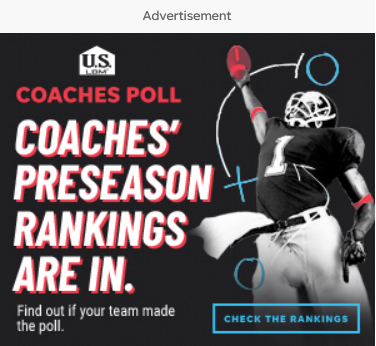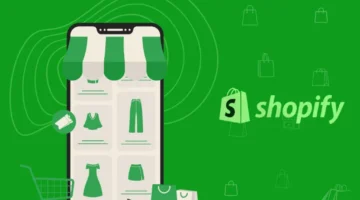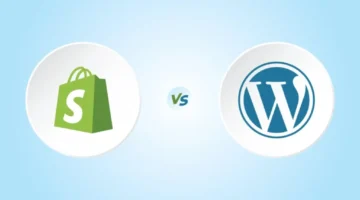Photo by Team TGM
Your Shopify store gets traffic, but sales stay flat. You change your homepage, tweak product descriptions, adjust pricing, yet nothing moves the needle. The problem? You’re guessing instead of testing. This guide shows you exactly how to use A/B testing to turn your Shopify store into a revenue-generating machine. You’ll learn which elements to test first, how to avoid common mistakes, and which tools actually work in 2025. Unlike generic advice, we’re focusing on proven strategies that have helped stores increase revenue by 20-45% without spending more on ads.
Table of Content:
What Is A/B Testing for Shopify Stores?
A/B testing (also called split testing) is a method where you create two versions of a webpage or element and show each version to half your visitors. Version A is your original (the control), and Version B is your new variation. You then measure which version drives more conversions, sales, or revenue.
For Shopify store owners, this means testing everything from product page images to checkout button colors. The goal isn’t just to increase clicks but to boost actual revenue. When you run proper Shopify A/B testing, you’re comparing data from real customers rather than making changes based on hunches. According to Shopify’s official guide, this approach helps you generate more revenue from the traffic you already have.
Unlike multivariate testing (which tests multiple elements simultaneously), A/B testing focuses on one change at a time. This makes it easier to identify exactly what’s working and what isn’t.
Why A/B Testing Should Be Part of Your Growth Strategy
A/B testing (also called split testing) means presenting two versions of a page (version A and version B) to different visitors and tracking which one performs better.
Here’s why it matters:
- Traffic alone isn’t enough. Many stores spend on acquisition and get visitors—but without optimizing conversion or average order value, the ROI remains weak. Testing targets the levers that drive revenue.
- Small wins compound. According to the replo article: “A 10% lift on a product page, plus 10% at cart, plus 10% at checkout, can stack into a meaningful revenue gain.”
- Benchmark context. Shopify reports that conversion rates vary widely—but for many stores remain in the low single digits.
By testing, you can shift from average to above-average. - Targets for your audience.
- For SaaS founders offering Shopify integrations: you can apply A/B testing in your landing pages, pricing models, trial-to-paid flows.
- Marketing managers and ecommerce brands: you deal with stagnating growth, unclear ROI and traffic bottlenecks. A/B testing gives you a process to unlock performance rather than just adding budget.
- Business owners with low conversion rates: this isn’t about more traffic—it’s about making each visitor more valuable. In sum: A/B testing is not optional if you’re serious about increasing revenue. It shifts you from guesswork to data-driven decisions.
Companies using conversion rate optimization (CRO) tools see an average ROI of 223%. That’s why testing beats guessing every single time.
What Should You A/B Test on Your Shopify Store?
Not all page elements deserve equal attention. Focus on high-impact areas that directly influence purchase decisions.
Product Page Elements
Your product pages attract the most traffic, making them prime testing territory. Start with these elements:
- Product images: Test hero shots versus lifestyle images showing your product in use
- Product descriptions: Compare benefit-focused copy (“sleep better tonight”) versus feature-focused copy (“made with organic cotton”)
- CTA button copy: Test “Add to Cart” against “Buy Now” or “Get Yours Today”
- Pricing display: Experiment with showing savings (“Save $20”) versus showing the final price first
- Urgency elements: Test limited stock messages or countdown timers
Customizing your Shopify theme makes it easier to implement these variations without touching code.
Homepage Landing Pages
Your homepage sets expectations for new visitors. Test these critical elements:
- Headlines: Your value proposition appears above the fold. Try headline testing strategies to see what resonates. Even one word can transform results.
- Hero section content: Test product images versus lifestyle photography
- Trust signals: Compare placement of reviews, security badges, and money-back guarantees
- Navigation structure: Test simplified menus versus detailed category listings
Checkout Cart
Cart abandonment averages around 70% across e-commerce. These tests can recover lost revenue:
- Free shipping thresholds: Test $50 versus $75 minimum for free shipping
- Guest checkout: Compare requiring account creation versus allowing guest checkout
- Payment options: Test adding Buy Now, Pay Later (BNPL) options like Affirm or Klarna
- Exit-intent pop-ups: Test discount offers (10% off) versus free shipping offers for abandoning visitors
Setting Up A/B Testing on Your Shopify Store
Pre-conditions for valid tests
Before you dive in, you need to ensure you’re set up for meaningful results:
- Sufficient traffic and conversions. If you’re getting only a few conversions per week, your test may take too long and risk inconclusive results.
- Clear goal definition. Decide what you will measure: add-to-cart rate, checkout completion, average order value (AOV), revenue per visitor (RPV).
- Reliable tracking. Ensure that your analytics (Shopify Analytics + Google Analytics) capture the events you’ll test.
- Stable context. During the test, avoid launching major changes (new product line, major theme overhaul) which could skew results.
Designing your test process
Running effective tests requires structure. Follow a process.
Set a Clear Goal
Define one primary metric before starting. Don’t track everything. Choose from:
- Conversion rate (CVR): Percentage of visitors who buy
- Average order value (AOV): Average amount spent per transaction
- Revenue per visitor (RPV): Total earnings divided by total visitors
RPV is often the most honest metric because it accounts for both conversion and order value. Calculate your minimum detectable lift (the smallest improvement you care about). Smaller lifts require larger sample sizes to prove statistical significance.
Form a Hypothesis
Use this format: “If we [change this element], then [this metric] will improve because [this reason].”
Example: “If we use lifestyle photos of people wearing our clothes instead of plain product shots, more visitors will make a purchase because it will be easier for them to picture themselves wearing our products.”
Create Your Variations
Keep it simple. Test ONE element at a time:
- Version A (Control): Your current page
- Version B (Variant): Your page with one specific change
Testing multiple changes simultaneously makes it impossible to determine which element caused the performance difference.
Split Traffic Evenly
Use a 50/50 split so half your visitors see each version. Most A/B testing tools for Shopify handle this automatically. You need statistical significance to trust your results, which typically requires at least 1,000 conversions per variant.
Run for the Right Duration
Patience matters. Shopify recommends running tests for at least 2-4 weeks to account for weekly shopping patterns and business cycles. Shoppers behave differently on weekends versus weekdays, and monthly payment cycles affect purchasing.
Analyze Implement
Look beyond just conversion rate. Revenue per visitor tells the complete story because a higher conversion rate doesn’t help if average order value drops.
Document your results. Note what you tested, the winning variation, the lift percentage, and why you think it worked. This creates a knowledge base for future tests.
Best A/B Testing Tools for Shopify in 2025
The right tool makes testing easier. Here are the top options for Shopify stores:
Convert Experiences: Enterprise-grade testing with affordable pricing starting at $74/month. Excellent for testing prices, content, and tracking revenue metrics. Strong support for goal tracking and segmentation.
Intelligems: Built specifically for testing pricing, shipping costs, and discounts. Pricing ranges from $99-$499/month. Merchants praise the responsive support and seamless Shopify integration.
OptiMonk: Features AI-driven automation for testing and personalization. Offers a free plan with premium plans available. The visual editor makes testing accessible without coding knowledge.
VWO: Comprehensive CRO platform with multivariate testing, behavioral analytics, and personalization. Starts at $199/month with enterprise plans available.
Replo: Visual page builder with integrated A/B testing. Great for quickly creating and testing landing page variations. Offers fast deployment from hypothesis to result.
Measuring Impact and Scaling Your A/B Testing for Growth
Key metrics to monitor
As you roll out tests, track these metrics:
- Conversion rate (CVR): percentage of visitors who make a purchase.
- Average Order Value (AOV): average revenue per order.
- Revenue per Visitor (RPV): revenue divided by total visitors combines CVR and AOV.
- Cart abandonment rate: % of users who drop out before completing purchase.
- Bounce rate / session length: for funnel pages; helps judge engagement.
Choose metrics aligned with your business objective, for SaaS app providers this could be trial-to-paid conversion; for ecommerce it could be RPV.
Interpreting results next steps
- If variant wins with statistical significance: implement it as new control.
- If results are inconclusive: analyse data segments (mobile vs desktop), check external factors (promotions, traffic source), decide whether to extend test or pivot.
- If variant loses: flag the hypothesis as invalid, iterate a new version or test a different element.
Scaling the testing culture
Testing is not a one-time initiative; it’s a growth habit:
- Assign a test owner or team (e.g., CRO manager or marketing lead).
- Maintain a “test library” of hypotheses, outcomes and learning.
- Use tools with automation or scheduled tests to feed your pipeline.
- Review results quarterly and plan next tests, adapt to seasonality, new traffic sources or device shifts.
- Treat experimentation as part of your business rhythm, not an after-thought.
Summary: Key Takeaways
A/B testing is not about fancy tools or design experiments; it’s about making smarter business decisions.
Every Shopify store has hidden growth opportunities buried in its pages: a confusing CTA, a poorly timed popup, or a checkout step that drives users away. Instead of guessing which change will fix it, A/B testing gives you proof.
By testing consistently, you learn why your customers behave a certain way, not just what they do. That insight compounds. One winning test improves your conversion rate. Ten winning tests reshape your entire revenue trajectory.
When you treat your store as a living, evolving system, one where every element is open to improvement, you stop chasing “more traffic” and start making every visitor count.
The best-performing Shopify stores aren’t just creative; they’re curious. They test, learn, and adapt every single week. That’s how you grow revenue predictably, sustainably, and intelligently in 2025 and beyond.
-
Run tests for a minimum of 2-4 weeks to account for weekly shopping patterns and business cycles. Shoppers behave differently throughout the week and month, with notable peaks during evenings and weekends. Ending tests too early leads to false positives where initial winners regress to average performance. Wait until you reach statistical significance (95% confidence) AND have at least 1,000 conversions per variant before declaring a winner.







